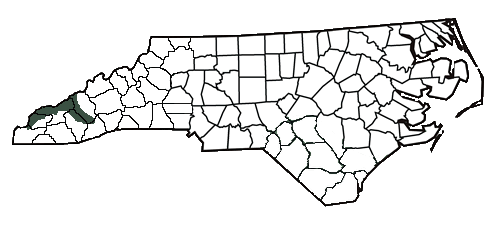-gmc-7-11-2008-GSMNP.jpg)
Desmognathus santeetlah
Photo by Grant Connette
Description: This species ranges in color from light to dark brown with a light belly, a moderately keeled tail, and “salt-and-pepper” flecking along the sides. Some individuals may have a faint pattern of spots, stripes, or reticulations down the back. Most individuals also have a faint yellow tint to the underside of the hind limbs and base of the tail.
Habitat/Range: The Santeetlah dusky salamander is found only at higher elevations in the mountains in and around the Great Smoky Mountains National Park. Santeetlah dusky salamanders are often found around streams and seeps but may also be encountered under debris on the forest floor as well as on damp rock faces.
Diet: Santeetlah dusky salamanders consume primarily small invertebrates.
Reproduction: Females lay eggs under moss or in excavated spaces in soil or rotting logs. Nest sites are typically very close to flowing water. The female guards her eggs until they hatch. Hatchling salamanders emerge from their eggs with external gills and undergo a brief period as fully-aquatic larvae. Hatchlings metamorph into the adult body form within a year and are sexually mature by their second or third year.

The shaded region represents the range of the Santeetlah dusky salamander in North Carolina.
-gmc-7-11-2008-GSMNP.jpg)
-gmc-7-11-2008-GSMNP.jpg)
-gmc-7-11-2008-GSMNP.jpg)
Photo by Grant Connette
-gmc-7-11-2008-GSMNP.jpg)
-gmc-7-11-2008-GSMNP.jpg)
Photo by Grant Connette
Photo by Grant Connette
